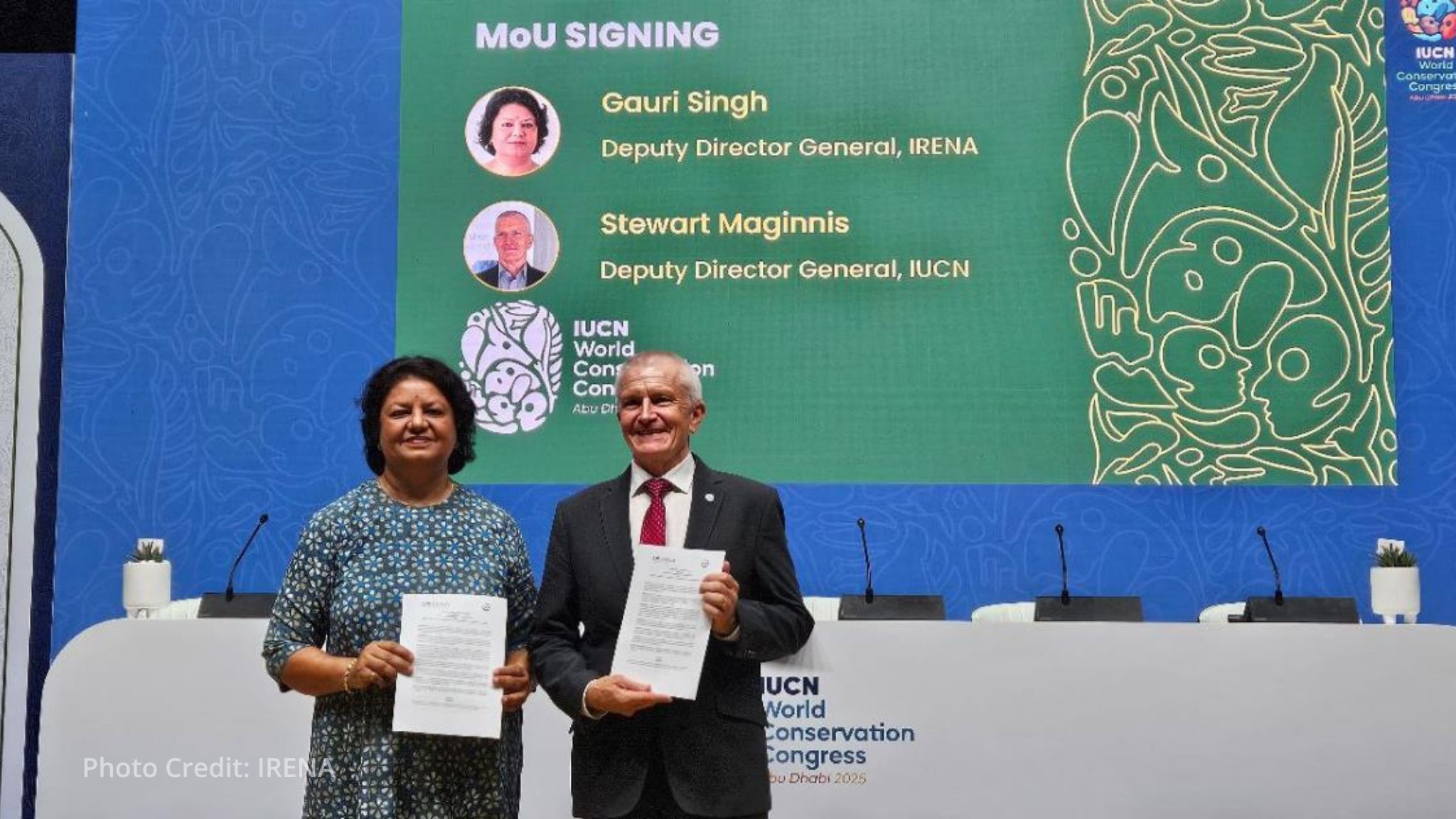The International Union for Conservation of Nature and the International Renewable Energy Agency (IRENA) signed a partnership deal to make sure the global shift to clean energy protects biodiversity and helps local communities, the organizations announced at the IUCN World Conservation Congress.
IUCN Deputy Director General Stewart Maginnis and IRENA Deputy Director-General Gauri Singh inked the three-year memorandum of understanding that sets up a framework for joint work on nature-positive renewable energy projects. The agreement aims to roll out renewable energy that not only cuts greenhouse gas emissions but also safeguards wildlife, strengthens community resilience, and supports global development goals. Both organizations want to send a clear message that the renewable energy transition must go hand in hand with protecting the natural world.
The renewable energy boom has created tensions between climate action and conservation as solar farms, wind projects, and transmission lines can damage ecosystems and displace wildlife. Large-scale renewable installations sometimes clash with protected areas or migration routes, while hydroelectric dams can alter river systems and affect fish populations. Local communities also worry about losing access to traditional lands or facing disruption from energy infrastructure projects. The partnership recognizes these challenges and aims to find solutions that work for both climate goals and nature protection.
Under the new agreement, IUCN and IRENA will work together to speed up the transition from fossil fuels while developing projects that minimize negative impacts on biodiversity and local communities. They plan to create tools for assessing how renewable energy projects affect wildlife and contribute to conservation goals. The partnership will also promote benefits that come from combining renewable energy deployment with nature protection through joint policy analysis and best practices. Officials said they’ll explore further cooperation including capacity building, technical research, and knowledge sharing.
Maginnis said “this collaboration sends a strong message: the renewable energy transition must go hand in hand with protecting biodiversity and supporting communities.” Singh noted that achieving 11.2 terawatts of renewable capacity by 2030 under the UAE Consensus “must take into account the preservation of ecosystems and enhancement of biodiversity.” The partnership reflects growing recognition that climate action and conservation need to work together rather than compete for resources. Both organizations see opportunities to design renewable energy projects that actually help restore damaged ecosystems.
The three-year agreement can be renewed and expanded based on results from initial joint activities. The partnership comes as countries race to meet climate commitments while also trying to halt biodiversity loss by 2030. Success will depend on developing practical tools and guidelines that energy developers can use to avoid or minimize environmental damage. The collaboration represents a shift toward viewing renewable energy and nature protection as complementary rather than competing priorities in the fight against climate change.

